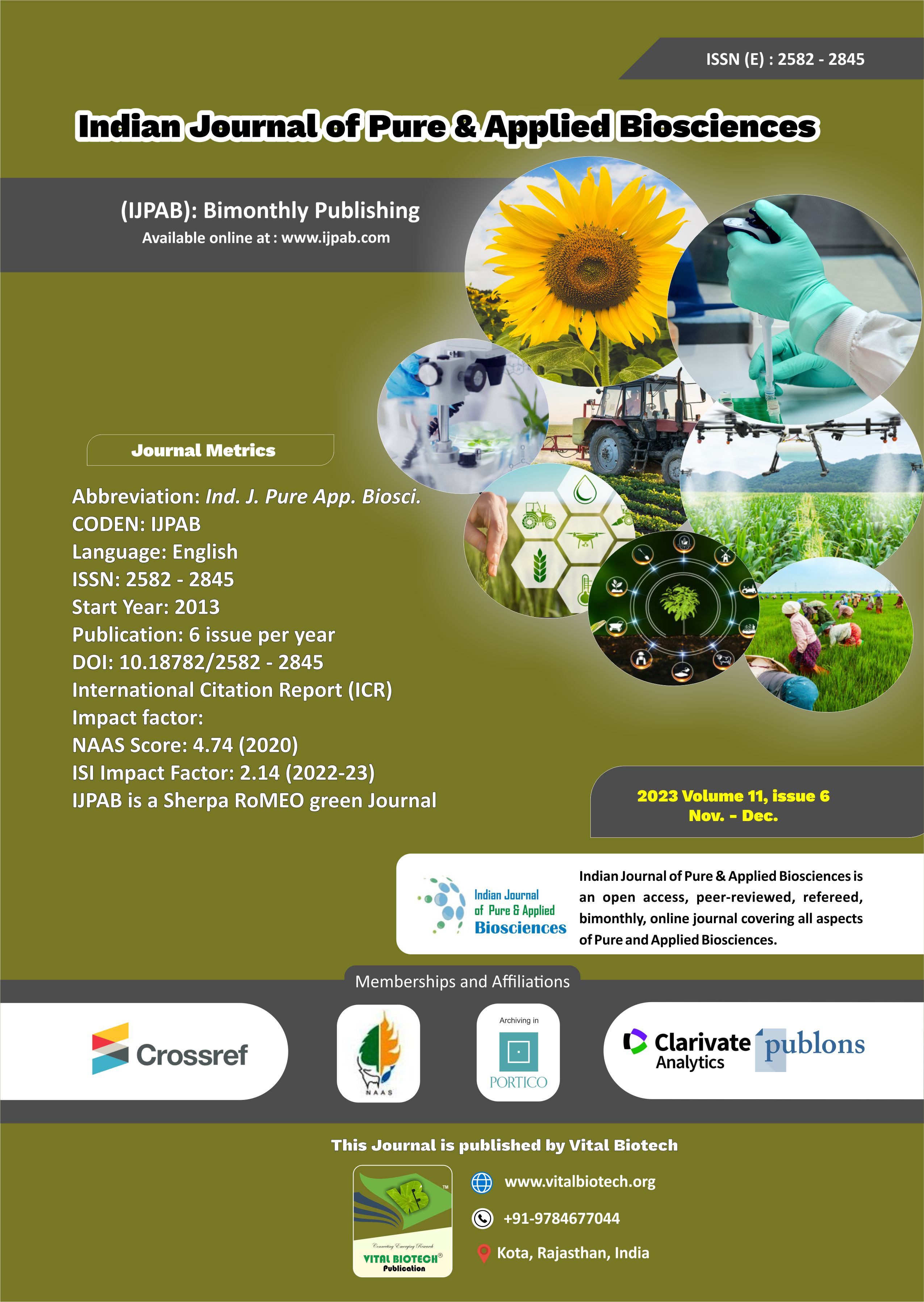-
No. 772, Basant Vihar, Kota
Rajasthan-324009 India
-
Call Us On
+91 9784677044
-
Mail Us @
editor@ijpab.com
Indian Journal of Pure & Applied Biosciences (IJPAB)
Year : 2023, Volume : 11, Issue : 6
First page : (46) Last page : (52)
Article doi: : http://dx.doi.org/10.18782/2582-2845.9033
Effect of Various Levels of Sulphur and Zinc on Growth and Yield of Late-Sown Wheat (Triticum aestivum L.)
Ritesh Yadav1 and Deepali Joshi2*
1M.Sc Student, Department of Agriculture, Agronomy, Dehradun, Uttarakhand, India
2Principal, Himalayan Institute of Technology, Dehradun, Uttarakhand, India
*Corresponding Author E-mail: deepaliaswal21@gmail.com
Received: 12.09.2023 | Revised: 19.11.2023 | Accepted: 3.12.2023
ABSTRACT
The present study was conducted at the Crop Research Farm of the Institute of Agriculture Training and Research, Prem Nagar, Dehradun, Uttarakhand, India, during the 2022-23 year. The experimental design employed was a Factorial Randomized Block Design (RBD), comprising nine treatments each replicated three times. These treatments involved varying level of (Sulphur- 20kg, 25kg, 30kg/ha, Zinc- 20kg, 30kg, 40kg/ha) arranged in an RBD Factorial with plot size 2m×2m varying. The primary objective of this study was to assess the response of wheat crops to different levels of sulphur and zinc fertilization. The results indicated that both nutrients played crucial roles in enhancing late-sown wheat productivity and may offer valuable insights into sustainable crop management practices. Data analysis revealed that the most effective treatment for increasing the Quality characters and Yield is 30 kg Sulphur ha-1 + 40 kg Zinc ha-1 under agro-ecological conditions of Dehradun. This finding has the potential to guide farmers and agriculture practioners in optimizing crop yields and quality in similar environments.
Keywords: Sulphur, Zinc, Late Sown Wheat.
Full Text : PDF; Journal doi : http://dx.doi.org/10.18782
Cite this article: Yadav, R., & Joshi, D. (2023). Effect of Various Levels of Sulphur and Zinc on Growth and Yield of Late-Sown Wheat (Triticum aestivum L.), Ind. J. Pure App. Biosci.11(6), 46-52. doi: http://dx.doi.org/10.18782/2582-2845.9033


